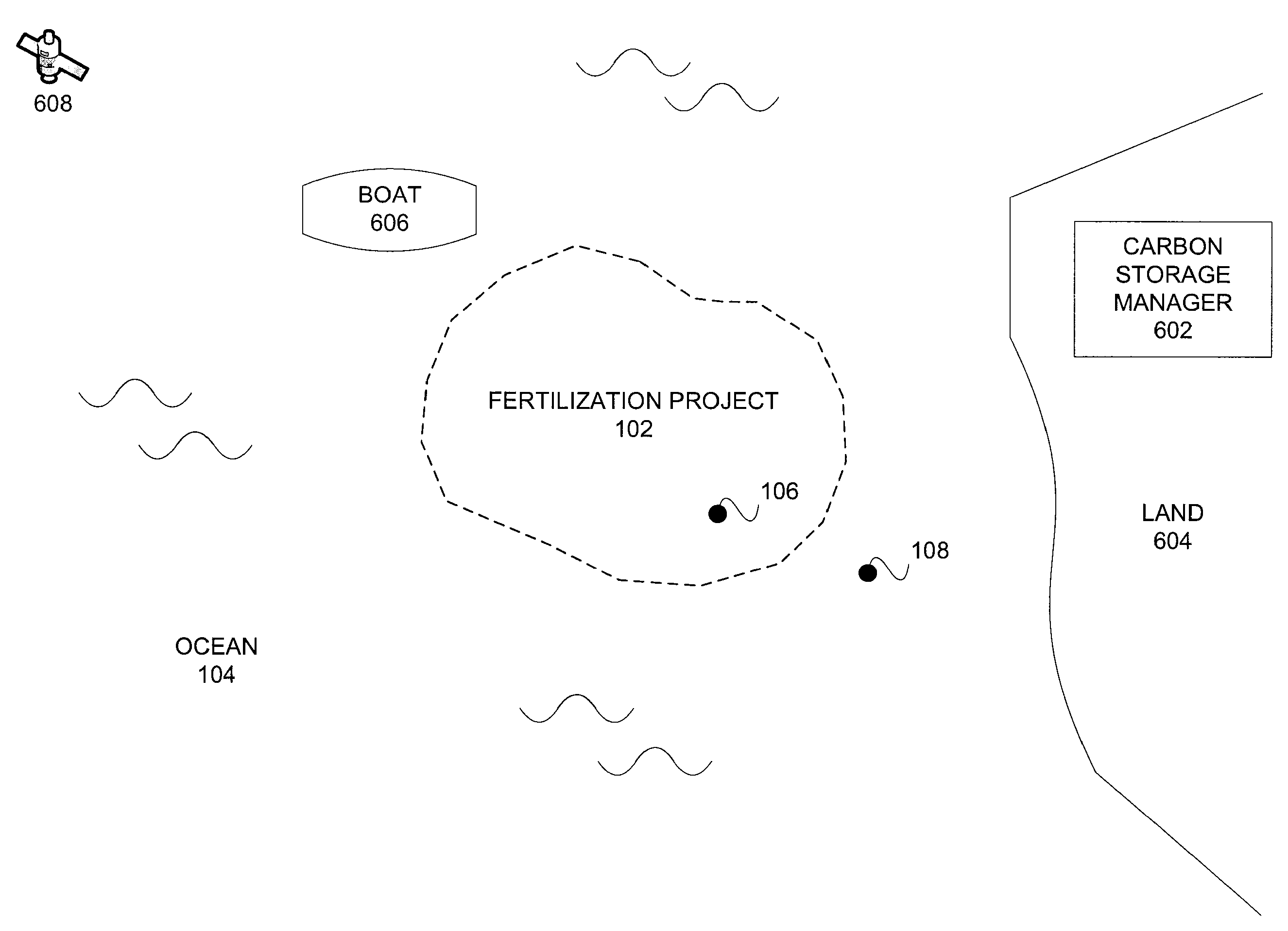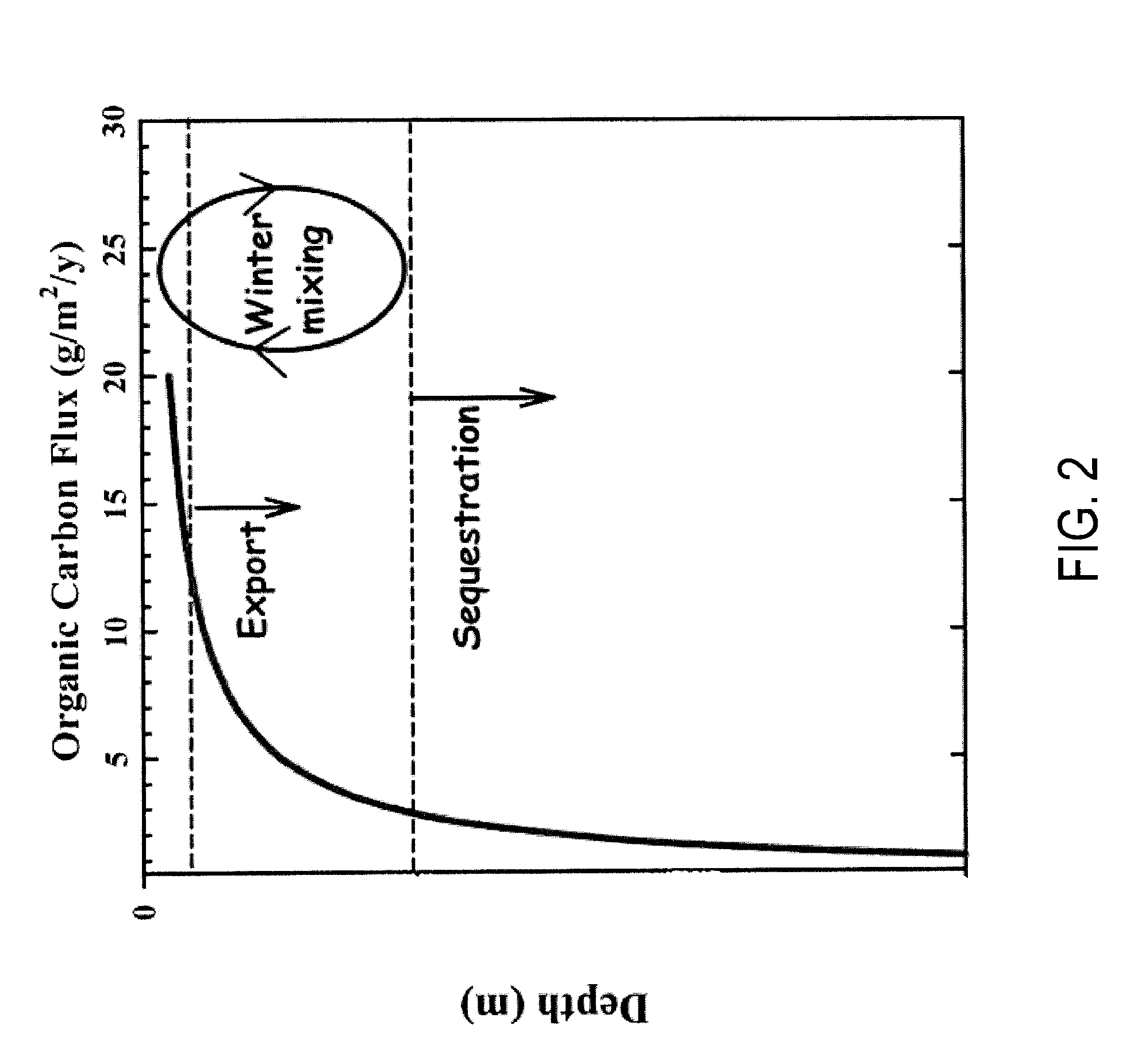Ocean Fertilization Project Identification and Inventorying
a fertilization project and inventorying technology, applied in the field of oceanography and climatology, can solve the problems of incomplete emission reduction approach, insufficient energy currently produced by non-fossil fuel energy sources, and failure to address previously-accumulated atmospheric greenhouse gases
- Summary
- Abstract
- Description
- Claims
- Application Information
AI Technical Summary
Benefits of technology
Problems solved by technology
Method used
Image
Examples
Embodiment Construction
Introduction
[0022]The carbon market is a worldwide environmental market that trades the net reduction of a predetermined quantity of carbon dioxide (CO2) from the atmosphere—either by preventing the predetermined quantity such as, e.g., one ton of CO2 that would have otherwise been emitted, or by directly removing a ton of CO2 that is already present. Recent reports have indicated that even drastic reductions in global carbon emissions will not suffice to prevent the increasing severity of global climate change. See generally Pachauri and Reisinger (eds.), Climate Change 2007: Synthesis Report, Contribution of Working Groups I, II and III to the Fourth Assessment Report of the Intergovernmental Panel on Climate Change, IPCC, (2007); and Weaver, A. J. et al. (2007), Long term climate implications of 2050 emission reduction targets, GEOPHYSICAL RESEARCH LETTERS, 34(L19703). The deep ocean is the single largest reservoir of mobile carbon on the planet, and is an appropriate candidate f...
PUM
 Login to View More
Login to View More Abstract
Description
Claims
Application Information
 Login to View More
Login to View More - R&D
- Intellectual Property
- Life Sciences
- Materials
- Tech Scout
- Unparalleled Data Quality
- Higher Quality Content
- 60% Fewer Hallucinations
Browse by: Latest US Patents, China's latest patents, Technical Efficacy Thesaurus, Application Domain, Technology Topic, Popular Technical Reports.
© 2025 PatSnap. All rights reserved.Legal|Privacy policy|Modern Slavery Act Transparency Statement|Sitemap|About US| Contact US: help@patsnap.com



